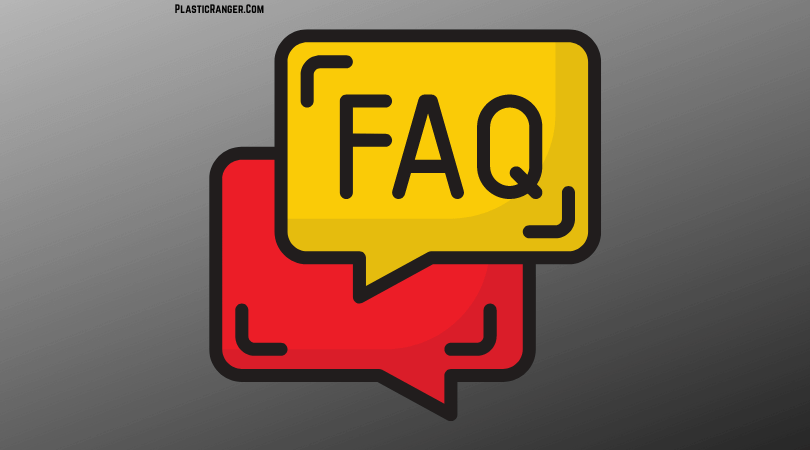Hello, People. Thanks to their toughness, ABS pipes are used worldwide, which is not found in PVC pipes. Let’s have a look at ABS pipe dimensions. So, without further ado, let’s get started.

ABS Pipe Sizes & ABS Pipe Dimensions
| Nominal Pipe Size | O.D. | Average I.D. | Min. Wall | Nominal wt./ft. | Maximum W.P PSI |
| 1/8″ | 0.405 | 0.249 | 0.068 | 0.051 | 810 |
| 1/4″ | 0.54 | 0.344 | 0.088 | 0.086 | 780 |
| 3/8″ | 0.675 | 0.473 | 0.091 | 0.115 | 620 |
| 1/2″ | 0.84 | 0.602 | 0.109 | 0.17 | 600 |
| 3/4″ | 1.05 | 0.804 | 0.113 | 0.226 | 480 |
| 1″ | 1.315 | 1.029 | 0.133 | 0.333 | 450 |
| 1-1/4″ | 1.66 | 1.36 | 0.14 | 0.45 | 370 |
| 1-1/2″ | 1.9 | 1.59 | 0.145 | 0.537 | 330 |
| 2″ | 2.375 | 2.047 | 0.154 | 0.72 | 280 |
| 2-1/2″ | 2.875 | 2.445 | 0.203 | 1.136 | 300 |
| 3″ | 3.5 | 3.042 | 0.216 | 1.488 | 260 |
| 3-1/2″ | 4 | 3.521 | 0.226 | 1.789 | 240 |
| 4″ | 4.5 | 3.998 | 0.237 | 2.188 | 220 |
| 5″ | 5.563 | 5.016 | 0.258 | 2.874 | 190 |
| 6″ | 6.625 | 6.031 | 0.28 | 3.733 | 180 |
| 8″ | 8.625 | 7.942 | 0.322 | 5.619 | 160 |
| 10″ | 10.75 | 9.976 | 0.365 | 7.966 | 140 |
| 12″ | 12.75 | 11.889 | ..406 | 10.534 | 130 |
| 14″ | 14 | 13.073 | 0.437 | 12.462 | 130 |
| 16″ | 16 | 14.94 | 0.5 | 16.286 | 130 |
| 18″ | 18 | 16.809 | 0.562 | 20.587 | 130 |
| 20″ | 20 | 18.743 | 0.593 | 24.183 | 120 |
| 24″ | 24 | 22.544 | 0.687 | 33.652 | 120 |
ABS Schedule 80 Sizes & Dimensions
| Nominal Pipe Size | O.D | Average I.D | Min. Wall Thickness | Nominal wt./ft. | Maximum W.P PSI |
| 1/8″ | 0.405 | 0.195 | 0.095 | 0.063 | 1230 |
| 1/4″ | 0.54 | 0.282 | 0.119 | 0.105 | 1130 |
| 3/8″ | 0.675 | 0.403 | 0.126 | 0.146 | 920 |
| 1/2″ | 0.84 | 0.526 | 0.147 | 0.213 | 850 |
| 3/4″ | 1.05 | 0.722 | 0.154 | 0.289 | 690 |
| 1″ | 1.315 | 0.936 | 0.179 | 0.424 | 630 |
| 1-1/4″ | 1.66 | 1.255 | 0.191 | 0.586 | 520 |
| 1-1/2″ | 1.9 | 1.476 | 0.2 | 0.711 | 470 |
| 2″ | 2.375 | 1.913 | 0.218 | 0.984 | 400 |
| 2-1/2″ | 2.875 | 2.29 | 0.276 | 1.5 | 420 |
| 3″ | 3.5 | 2.864 | 0.3 | 2.01 | 370 |
| 3-1/2″ | 4 | 3.326 | 0.318 | 2.452 | 350 |
| 4″ | 4.5 | 3.786 | 0.337 | 2.938 | 320 |
| 5″ | 5.563 | 4.768 | 0.375 | 4.078 | 290 |
| 6″ | 6.625 | 5.709 | 0.432 | 5.61 | 280 |
| 8″ | 8.625 | 7.565 | 0.5 | 8.522 | 250 |
| 10″ | 10.75 | 9.493 | 0.593 | 12.635 | 230 |
| 12″ | 12.75 | 11.294 | 0.687 | 17.384 | 230 |
| 14″ | 14 | 12.41 | 0.75 | 20.852 | 220 |
| 16″ | 16 | 14.213 | 0.843 | 26.81 | 220 |
| 18″ | 18 | 16.014 | 0.937 | 33.544 | 220 |
| 20″ | 20 | 17.814 | 1.031 | 41.047 | 220 |
| 24″ | 24 | 21.418 | 1.218 | 58.233 | 210 |
Fascinating Read – What is PVC Fittings? | What is PVC Connection? | The Definitive Guide
ABS Pipe Advantages
- Boasts superior fluid flow due to a smooth interior finish.
- Easier and less expensive to install compared to metal pipes.
- With proper and professional handling, it can withstand earth loads and shipping.
- Lightweight (One person can load and unload with ease.)
- It can withstand mechanical damage even at lower temperatures.
- Do not rust, rot, corrode, or collect waste.
- Gives good performance at an operational temperature of up to 60°C (140°F).
ABS Pipe Applications
ABS pipes & fittings have become a force to reckon with for DWV applications worldwide, thanks to their incredible combination of properties.
According to a few reports, contractors have installed more than 10 billion feet of ABS pipes & fittings in residential and commercial areas.
ABS pressure pipes are also gaining market share for industrial applications, primarily driven by PVC Schedule 80 pipes.
Primarily available in Schedule 40 and 80 dimensions, ABS pipes are highly advisable for solid-wall and cellular core constructions.
However, it is ideal for underground pipes and above-ground applications when blended with the correct pigments.
Adequate pigments like water-based latex paint can protect the pipe from ultraviolet radiation and jurisdictions.
However, remember to consult with the material supplier about the rules and regulations regarding the particular area.
It is approved for potable water systems and is more rigid and durable than PVC. It is also one of the least resistant plastics to solvents.
Specifying ABS pipe is easy as the pipe wall of Schedule 40 ABS DWV pipe is the same thickness as Schedule 40 (IPS) steel pipe.
ABS pipes are extensively utilized for:
- Industrial drainage and vent systems
- Pressurized liquid lines for crude and irrigation oil and salt water.
- Interior and Exterior sanitary
- Pumped waste
Chemical Resistance of ABS Pipe
Recent research, including a prominent study by the ABS Institute, has shown that ABS pipes are remarkably resilient regarding household chemicals. This means they stand up well to many products we often use without suffering damage. Here’s a quick look at some common cleaners that ABS pipes can handle with ease:
- Borax-based cleaners are great for all-purpose cleaning and pose no threat to ABS pipes.
- Calgon water softener: Even as it works to soften your water, it’s completely safe for the pipes.
- Ammonia (5% solution): It is ideal for tough grime; thankfully, it won’t harm your piping.
- Renuzit spot remover: Perfect for tackling stains, washing down ABS pipes is safe.
- Tide detergent: Frequently used in laundry, this detergent won’t degrade your pipes.
- Smilax cleanser: Known for its effectiveness, and it’s also ABS-friendly.
- Drano: A go-to for clogged drains, it’s safe to use without damaging ABS pipes.
- Liquid Sani-flush: Targets toilet bowl sanitation and is safe for the pipes below.
- Liquid Plumber: Another strong choice for clogs that won’t compromise pipe integrity.
- Lysol, Vanish, and Liquid Vanish bowl cleaners: These keep your toilet spotless and are harmless to the plumbing.
- Sno-Bol bowl cleaner: Works effectively on toilet bowls and is safe for ABS pipes.
This impressive chemical resistance makes ABS pipes a durable choice for plumbing systems, ensuring longevity even with regular exposure to these cleaning agents.
10 Easy and Quick Installation Steps

- Measure the pipe from the bottom or shoulder of each socket into which the pipe is supposed to fit.
- Cut the pipe to the required length. Ensure that the cut is square.
- Ream inside and chamfer outside of the pipe to eliminate all burrs. Sand lightly.
- Clean all the grease, dirt, and moisture from the pipe and fitting socket using a dry cloth.
- Check the dry fit of the pipe inside the fitting socket.
- Apply a light coat of ASTM D2235-compliant ABS solvent cement to the inside of the fitting socket and the outside of the pipe.
- Thrust the pipe into the fitting socket, giving the pipe a one-quarter turn and ensuring it goes to the socket bottom.
- Hold the joint together until a tight set is obtained.
- Check for cement beads around joints; wipe extra cement from the pipe.
- Don’t move or even touch the system (if possible) until the joints are cured. Wait for the time recommended by the solvent.
FAQs

Below are the frequently asked questions for ABS pipe dimensions. Let’s dig deep to know more.
What is the difference between ABS and PVC pipes?
There are many differences between PVC and ABS pipes. For instance, PVC is more flexible; however, ABS is more durable and shock-resistant. ABS is better than handling cold temperatures but can warp or bend under direct exposure to sunlight. PVC is good at muffling the sound of running water. In terms of their prices in the North American markets, both cost the same.
Does ABS pipe need a primer?
Primer is used to clean and soften the surface of the plastic to ensure a good solvent weld. It is used for both PVC and CPVC but is not required for ABS pipes. The primer is identified by its purple color.
Is it possible to join ABS and PVC pipes?
It is possible to join ABS and PVC pipes, but this can only be done using a mechanical coupling. Both of them can’t be glued together.
How long will the ABS pipe last?
An ABS pipe has an average lifespan of 50 – 80 years.
Why ABS pipe is always black?
ABS is always black because it contains Bisphenol-A. On the contrary, PVC pipes are primarily found in white and grey colors.
Suggested Read
- Top 12 Plastic Film Manufacturers and Suppliers
- Plexiglass Vs. Acrylic | What are the Differences and Similarities?
- What is Compressive Strength of Plastics | The Complete Guide
- 6 Best Plastic Molding Techniques | A Complete Analysis
Final Thoughts
ABS pipes offer a cost-effective and durable solution for various plumbing and drainage applications. Understanding the various ABS pipe sizes and dimensions is essential for selecting the appropriate size and ensuring proper installation.
By consulting with a professional and carefully considering your project’s needs, you can confidently choose the right ABS pipe size and dimension for your application, ensuring a successful and long-lasting plumbing system. With proper installation and maintenance, ABS pipes can provide reliable performance for years.
Kindly share your thoughts and reviews in the comment box.
Quick Navigation


I need to find 1.25″ schedule 40 ABS pipe. Where can I purchase some.
Nice article on abs pipe sizes. I must say I’m impressed
Thank you very much
Nice article. I Appreciate the time and effort that must have gone into it.
Thanks